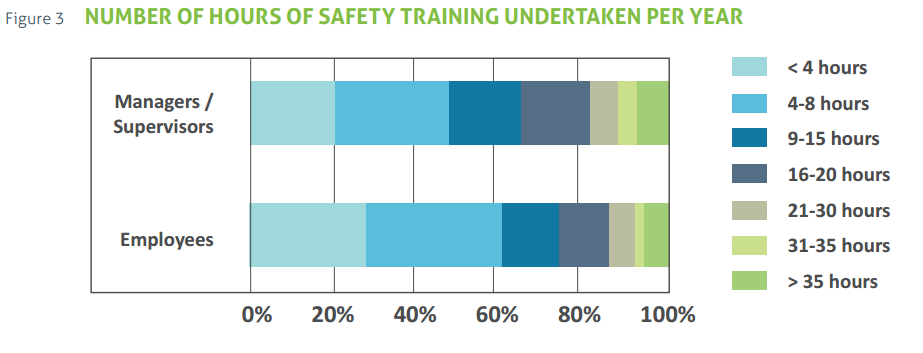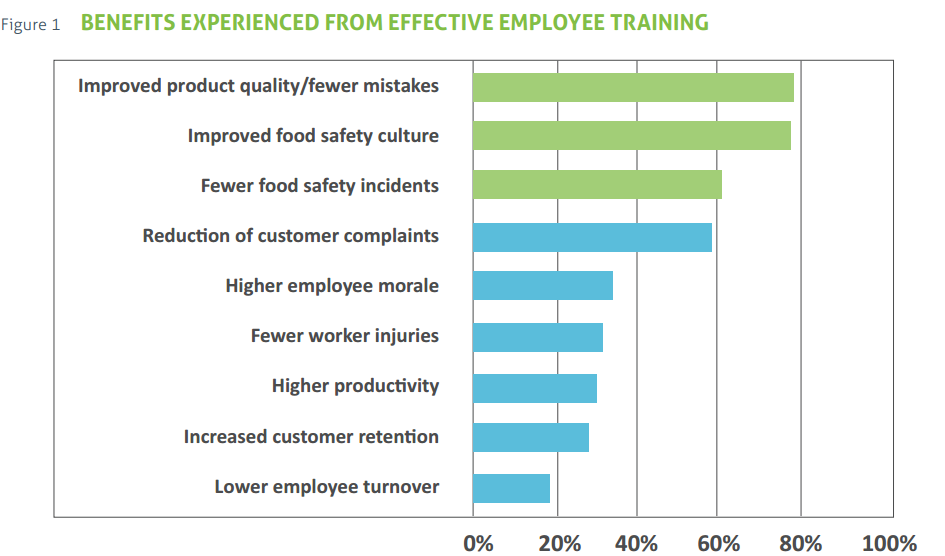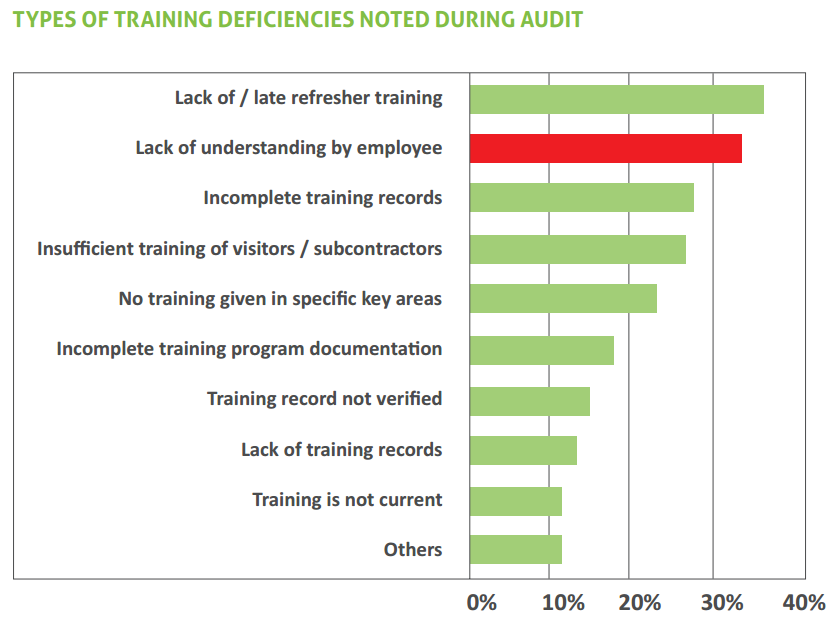Closing the Gaps: Global Food Safety Training Survey Results

Across the global supply chain, the frontline workers who handle our food play a direct and critical role in food safety. With increasing pressure from customers, regulators, and consumers, food companies must ensure their workers are trained, monitored, and coached on proper food handling techniques and practices.
To help all stakeholders better understand the state of food safety training, Alchemy partnered with the British Retail Consortium, CampdenBRI, SGS, SQF Institute, and TSI on a survey of food manufacturers and processors from around the world to learn about their food safety training needs, successes, and challenges. The latest Global Food Safety Training Survey revealed valuable data that enables companies to benchmark their own food safety cultures and training practices.
The survey also provided three key findings—first, that companies are fully committed to food safety; second, that there are still substantial gaps in both the nature of food safety training and its method of delivery to be overcome; and third, the specific characteristics of the solutions companies use to successfully bridge those gaps.
Companies Committed to Food Safety
The survey shows that the vast majority of food companies recognize the importance of a positive food safety culture and the potential impact of training on driving the appropriate behaviors that strengthen a food safety mindset.

- The top three reasons cited for training employees are all related to food safety.
- 75% of respondents believe that employees would be more productive if food safety programs were consistently applied.
- Companies are devoting significant time and resources to training their frontline workers, supervisors, and managers. However, 44% of companies are creating an exposure by not mandating the same training for their contract and temporary workers.
- Companies are covering a wide range of food safety topics, including: GMPs, personal hygiene, traceability, allergens, sanitation, and cleaning.
The Gap: Limited Behavioral Change
Despite the commitment to building a positive food safety culture, 62% of respondents say that not all of their employees are following the food safety program on the floor. There are likely many factors explaining the lack of on-the-floor execution, and the factors may vary by plant and company.
The survey suggests several areas to explore:
- Training materials are too complex given the diverse workforce. 34% of audit deficiencies note “lack of understanding” by employees.
- Training content is either not relevant or does not effectively engage younger workers.
- Supervisors and frontline employees are not “owners” of the food safety culture. Just 51% of companies use supervisors to observe and measure food safety behaviors.
- Food safety training is not consistently supplemented with refresher communications to keep important safety concepts top of mind. Auditors cite “lack of refresher training” as the top training-related deficiency.

Closing the Gap with Practical Solutions
Closing the gap between a company’s commitment to food safety and the frontline’s actual behaviors requires new thinking and approaches:
- Simplify training materials and shorten training time, so that employees are not “drinking from a fire hose” during training. This will also minimize time off the production floor (62% of respondents say that finding the time to train frontline workers is their biggest hurdle).
- Use modern training delivery mechanisms with interactivity, gamification, group interaction, and other learning techniques to provide an engaging and consistent training experience.
- Get frontline supervisors and workers engaged by validating food safety practices and employee behaviors right on the floor through documented observations. Encourage supervisors to provide coaching and reinforcement in real time.
- Reinforce classroom training with continuous “knowledge boosts” through structured team huddles, micro-courses, and signage. Research shows that learners lose 90% of training in a week. That means reinforcement is not only a best practice, but a necessity.
Upon examining the survey results, it is clear that there are opportunities for improvement in training content and delivery frequency. However, the survey also reveals that management’s commitment to food safety training is stronger than ever—a sure sign the industry’s approach to food safety is on the right track.
Download the Global Food Safety Training Survey Report.
ABOUT THE GLOBAL FOOD SAFETY TRAINING SURVEY
The survey provides invaluable information which allows companies to benchmark their food safety training against other food manufacturers and processors from around the world and identify opportunities for development.
The survey was sent to over 25,000 food manufacturing and processing sites worldwide, so the results provide a complete useful snapshot of the current activities and practices in food safety training. The companies surveyed represent a cross section of the industry and ranged in size from under 50 employees to over 1,000 and cover many sectors including beverages, cereal and baking, dairy, retail, and packaging.







